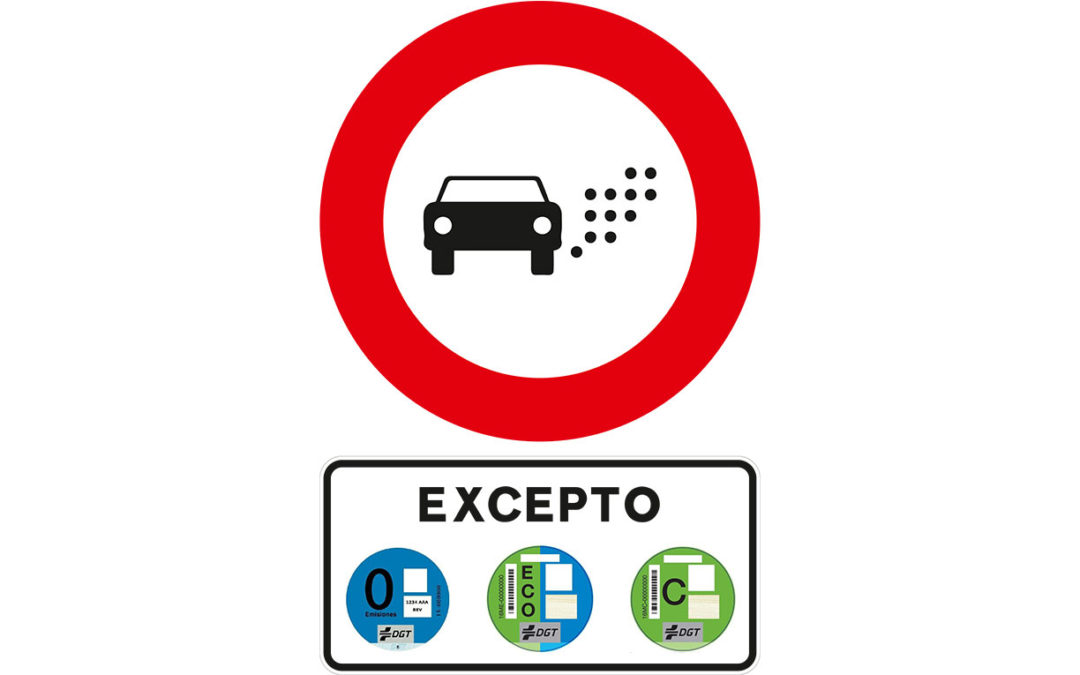Spain is taking significant strides towards cleaner air and a more sustainable future. A key element in this strategy is the implementation of Zero-Emission Zones, also known as "Zonas de Bajas Emisiones" (ZBE) in Spanish. These designated urban areas restrict access to vehicles based on their emission levels, prioritising cleaner transportation options and fostering a healthier environment for residents and visitors alike.
This comprehensive guide aims to equip you with all the essential information regarding ZBEs in Spain. We'll delve into the current state of affairs, explore the potential impact on drivers, and provide practical tips to ensure a smooth journey through Spanish cities.
The ZBE Landscape in Spain: A Dynamic Transition
The national zero-emission project by the Spanish Traffic Authority (DGT) is in its implementation phase, but individual cities have already taken the initiative to establish their own ZBE regulations. As of April 2024, most Spanish cities with more than 50,000 inhabitants, and some with over 20,000 with high pollution levels, are mandated to have ZBEs in place. Their implementation is expected to follow soon; a rapidly expanding network of ZBEs across the country.
It's crucial to remember that each city has the authority to define its specific ZBE regulations. The size of the restricted area, access restrictions based on emission labels, and potential exemptions for residents or specific vehicle categories can all vary.
Here's a breakdown of the key aspects to consider:
- ZBE Zones: The ZBE can encompass the entire city centre, specific districts, or designated streets.
- Emission Labels: Spain utilises a DGT environmental label system, categorising vehicles based on their emissions (Cero Emisiones - Zero Emissions, Eco, B, C, No Label). Access to the ZBE depends on the label displayed on your vehicle.
- Restrictions: Vehicles with lower emission labels (Cero Emisiones and Eco) typically face minimal restrictions, while older, more polluting vehicles (No Label) might be entirely barred from the ZBE, with some exceptions for residents / specific situations.
- Fines: Disregarding ZBE regulations can result in significant fines, so ensuring your vehicle complies with the specific city's regulations is essential.

Understanding the DGT Environmental Labels:
The DGT environmental label system categorises vehicles based on their European emission standards. Let's explore each label category and its implications for ZBE access:
- Top Tier - Blue Sticker (Etiqueta 0 Emisiones):
- Electric vehicles and Hybrids with 40+ km electric range - These vehicles generally enjoy unrestricted access to ZBEs.
- Eco-Friendly - Half-Green Half-Blue Sticker (Etiqueta Eco):
- PHEVs (less than 40 km electric range), natural gas, LPG vehicles - Generally good ZEZ access, with potential restrictions. Access to ZBEs for Eco vehicles might vary depending on the specific city's regulations.
- Compliant - Green Sticker (Etiqueta C):
- Gasoline cars (2006+), diesel cars (2015+), some heavy-duty vehicles (2014+) - May face ZEZ restrictions during high pollution or specific zones.
- Older Vehicles - Yellow Sticker (Etiqueta B):
- Gasoline cars (2001-2005), diesel cars (2006-2015), some heavy-duty vehicles (2006-2013) - They typically have the most limited access to ZBEs, with potential exemptions for residents or specific situations.
The remaining 50% of vehicles, representing the most polluting category, do not qualify for any label due to their non-compliance with emission standards. These vehicles might face significant restrictions or even complete bans from entering ZEZs.

Staying Informed: Essential Resources for Drivers
Staying updated on the latest ZBE regulations is paramount for drivers navigating Spanish cities. Here are some resources that can help:
- Official City Council Websites: Each city council website should provide detailed information on its ZBE, including maps of the restricted area, access regulations, and potential exemptions.
- DGT Environmental Label Website: This website allows you to check your vehicle's DGT environmental label online by entering your Spanish registration number: https://sede.dgt.gob.es/en/vehiculos/informacion-de-vehiculos/distintivo-ambiental/index.html.
Planning Your Trip Through Spanish Cities: Practical Considerations
With ZBEs becoming increasingly common, here's how to ensure a smooth and compliant journey:
- Research ZBE Regulations: Before embarking on your trip, research the ZBE regulations in the cities you plan to visit. Understand the size of the restricted area, access restrictions for your vehicle's emission label, and any potential exemptions.
- Check Your Label: Verify your vehicle's environmental label and ensure it complies with the regulations of the cities on your travel itinerary. If unsure, consider getting a DGT-sticker if your vehicle qualifies. Stickers can be purchased at Spanish post offices (Correos) for a small fee (€5).
- Consider Alternative Transportation: ZBEs are a compelling reason to explore alternative transportation options within cities, such as public transport, bicycles, or electric scooters. Many cities offer excellent public transport networks, and exploring a city on a bike can be a unique and enjoyable experience.
Looking Ahead: The Future of ZBEs in Spain
The ZBE landscape in Spain is dynamic and constantly evolving. As the national DGT project progresses, we can expect further standardisation of regulations across cities. Technological advancements in cleaner vehicle technology and infrastructure, coupled with increasing public awareness, will likely lead to a future where ZBEs become even more widespread.
Here are some additional points to consider:
- Impact on Tourism: ZBEs might pose challenges for tourists driving older vehicles. However, many cities offer excellent public transportation options, and car rental companies are increasingly stocking electric and hybrid vehicles to cater to travellers seeking a more sustainable option.
- Foreign Vehicles: For vehicles registered in Germany, Austria, France, and Denmark, there is an equivalence table that matches their respective emission stickers to the corresponding DGT environmental label categories. This means that vehicles from these countries with the appropriate sticker can generally access ZBEs based on their sticker classification.
- Unfortunately, there is currently no equivalence table for Dutch or Belgian emission stickers. This means that vehicles registered in these countries cannot rely on their existing stickers to gain access to Spanish ZBEs. Here is what you can do:
- Check ZBE Regulations for Specific Cities: Before travelling, check the ZBE regulations for each city you plan to visit. Some cities may have their own policies for foreign vehicles, potentially allowing access based on the vehicle's actual emission standards.
- Consider a Temporary Permit: Some Spanish cities offer temporary permits for visitors whose vehicles don't have the required DGT environmental label. These permits might be valid for a limited period and come with a fee. Check with the city council for details.
- Plan Alternative Routes
Conclusion
ZBEs are transforming urban mobility in Spain, promoting cleaner air and a healthier environment. By staying informed and planning ahead, travellers can navigate these changes with ease and contribute to a more sustainable future for Spain's vibrant cities.
We at Hypotienda are committed to keeping you updated on the latest developments regarding ZBEs in Spain. Visit our website or contact your local Hypotienda branch for further information and guidance. Remember, a little planning goes a long way in ensuring a smooth and enjoyable journey through the beautiful cities of Spain.




